Keir Leslie – 9 August, 2013
The stream as a way of ordering information is one that has its roots in computational and informational theoretic contexts: the ticker tape reeling off stock market quotes, the online streaming of music, and, perhaps most archetypally, Turing's formulation of his machine with its infinite tape. It is at once a very impoverished and very rich structure.
Christchurch
Joel Cocks and Sorawit Songsataya
Dakapo’s Photostream
20 July - 11 August 2013.
For Dog Park Art Project Space one salient and ongoing concern has been finding ways to handle the presentation of textual reflections and remarks both within and beyond the physical space of the gallery and the conceptual framework of each show. Chill Spree, the previous exhibition, resolved this through the production of a publication which presented a catalogue essay by the curator, Henry Davidson, as well as a text by PBPR which sat alongside their video work in the space, and a small, credit card format work by Ben Clement that was otherwise independent of the works in the space. This positioned the publication as a part of the show, rather than simply as documentation or a record.
Dakapo’s Photostream, Dog Park’s current exhibition, consists of two groups of photographs. One is an assorted grouping of snapshots and Polaroids propped against the gallery wall. The other is a strip of glossy images appropriated from a Flickr photostream, each around A2 size, laid diagonally across the gallery floor, almost but not quite traversing the space from wall to wall. On this strip of images float a series of computer windows, displaying various texts.
By presenting them as part of the stream of photos, Dakapo’s Photostream integrated the texts into the body of work. Dog Park has since made those texts available online, again embedded with the stream of photographs. This resolution again joins the show and texts, but removes the mediating and separating vessel of the publication.
The texts themselves (by Elle Loui August, Holly Best, Robyn Pickens, Max Trevor Thomas Edmond, and Creon Upton) are varied in their stylistic and conceptual approaches, from Creon Upton’s discursive, didactic monologue to Holly Best’s stream of hashtags: “#sexy #naughtyselfies #geraniums #Mindy #hi_mum #cantgetenough #classof2006 #washinghair …”
Max Trevor Thomas Edmond’s text outlines a certain set of concerns about presentation and experience: “images-meaning collected into a body-space. area-designation”. They are, I think, particularly pertinent to the problem of redisplaying imagery derived from an online stream in the gallery context.
The stream as a way of ordering information is one that has its roots in computational and informational theoretic contexts: the ticker tape reeling off stock market quotes, the online streaming of music, and, perhaps most archetypally, Turing’s formulation of his machine with its infinite tape. It is at once a very impoverished and very rich structure. Compared to the album or the library, it is almost entirely formless, consisting simply of one thing followed by another. But it is endless: one more item may be added, and yet another, and so-on, to infinity.
How to take a part of this theoretical infinity and display it in the finite space of a gallery is one of the problems that Cocks and Songsataya have set themselves. As “Chloe” states, placing a selection of photographs in a linear strip on the floor alludes to the “realness of a brownish negative strip”. It also forces the viewer into a certain relationship to the work. When we look at a photograph hung on a wall, we may move closer or further away: we have a great deal of control over the distance we take from it. When it is placed on the ground, we are forced to view the photographs from a particularly limited set of distances.
More importantly, we can gain no greater distance than that afforded by our height. We are denied the ability to step back until we can take in the whole work, and in this way, something of the infinity of the stream is maintained. (If we step back, or if we look along the length of the strip, we are no longer parallel to the strip, which distorts and recedes in ways that echo perspectival illusions of infinity.)
There is also a nice reference to the traditional imagery of the Turing machine, a flat tape over which the reading head moves, traversing backwards and forwards.
The photographs used are drawn from a pretty nondescript Flickr photostream, one which documents a broader and more expensive set of experiences (yacht-sailing, cruises in Hanseatic Rostock, Depeche Mode concerts, the Jungfraujoch) than average - but which is still, roughly, generic. It is “innocent” imagery: there is nothing that would raise an eyebrow. Despite the anonymity and lack of specificity of the imagery, I found viewing the show something of a voyeuristic process. This complicity in voyeurism highlighted the reliance of internet start ups on a scopic regime of mild illicitness.
Keir Leslie
Recent Comments
Ralph Paine
Wonderfully, Michel Houellebecq’s novel “The Map and the Territory” reminded me this week that the relation between art and writing ...
Warren Feeney
My concern is primarily with Keir Leslie's comment that the publication for Chill Spree sat 'as part of the show.' ...
Creon Upton
... and not on whether it contains the odd apostrophe error ;)
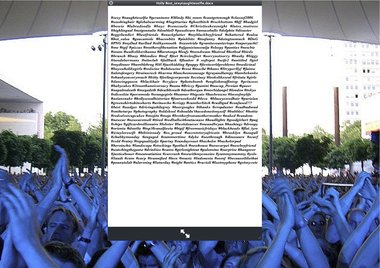
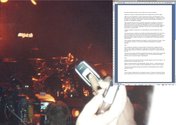
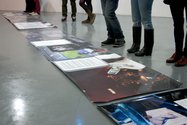
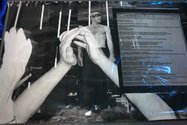
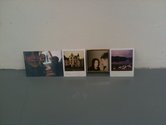


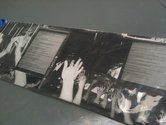
 Two Rooms presents a program of residencies and projects
Two Rooms presents a program of residencies and projects Advertising in this column
Advertising in this column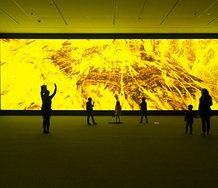
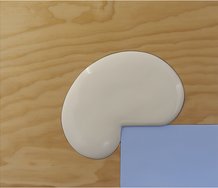
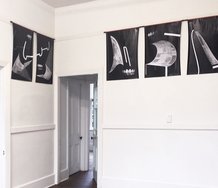
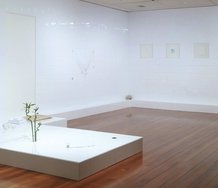
This Discussion has 6 comments.
Comment
Warren Feeney, 5:17 p.m. 10 August, 2013 #
'Incorporating textural reflection into exhibitions.'
Why is this even being raised as a topic for consideration?
'This positioned the publication as a part of the show, rather than simply as documentation or a record'
I have always believed in the premise of the authority of an artwork having pride of place over the accompanying curatorial context or art critic's commentary. Without the artwork - is a curator or critic even able to imagine a point of view?
Dave Hickey was right: Writing about art really is as sad as playing air guitar. So pleased to have this confirmed in this review.
Henry Davidson, 12:03 p.m. 20 August, 2013 #
Hi Warren,
I’m the curator of ‘Chill Spree,’ the show Keir mentions here briefly in regards to the publication we produced to accompany and be a part of our exhibition.
To me, art writing is an important way to engage with artwork but in no way takes precedence over the work itself. It’s a useful way for a viewer, writer or curator to get deeper into the work, sometimes to make work more accessible, sometimes to provide context or background information and also, importantly, to further distribute projects that were ephemeral or that not everyone was able to see or experience. I think it’s worthwhile to consider the dialogue around an exhibition as being intrinsically ‘part of the show,’ - not part of the work because that would be silly - but part of the network of events, conversations and ideas that form ‘the show.’
Considering you are an art writer yourself (for EyeContact no less) I guess your comment should be read as a provocation or maybe just an inflammation. But in terms of our aim (I can’t speak for Joel, Sorowit or the writers involved in their project) to encourage discussion and thinking around our show (again, isn’t this what Eyecontact receives CNZ funding for?) your comment feels really unnecessary and unhelpful, rather than contributing to some form of ‘spirited discussion.’
Warren Feeney, 11:10 a.m. 21 August, 2013 #
My concern is primarily with Keir Leslie's comment that the publication for Chill Spree sat 'as part of the show.' I do, in general, agree with your thoughts about the intentions of writing on the arts and its role and contribution to an artist's work. However, I would also qualify them in regards to the way in which curatorial texts and arts commentary (whether in a publication or on the gallery wall) have an increasing tendency to occupy and assume an all-too significant presence in the gallery alongside the artist's work - Often getting in the way of the audience and the experience of the work – closing down conversations and frustrating the act of seeing and reflecting.
It seems to me that Keir Leslie gives too much credit to the curator/writer and I see this as a worrying trend in current arts practice. Of course, there are historical and current examples of relationships between writers and artists where the outcomes have been beneficial, not only to both parties, but also to audiences - Francis Pound/Gordon Walters or Justin Paton/Shane Cotton, so I am not drawing a line in the sand with this argument.
I would also suggest that Dave Hickey's 'air guitar' comment is a statement, but not the definitive one, on writing about art. There is, however, a context provided by Hickey that is intended to humble all who write on the arts and suggests that sometimes it is appropriate to reflect on the merit and value of our craft. I belong to a generation that remembers a pre-digital print era when the exhibition catalogue was printed in a run of 500 copies to keep costs down. Typically 150 to 200 copies would be sold - the remaining 300 hundred sat around in the gallery as a reminder of the relative importance of the words within - so the reach of the curator/writer to an audience is often small, whereas the accompanying public interest in the work on exhibition, in my experience, is much larger.
You have also noted that I am an art writer. So, in view of the comments above, why do I bother? Certainly, I do feel privileged to be contributing to eyecontactsite. My commitment to writing is probably due to a combination of an inescapable enthusiasm and addiction to the arts and an aspiration to achieve the kind of outcome in words that Creon Upton details in his opening remarks below.
Creon Upton, 5:19 p.m. 20 August, 2013 #
The subject-matter of any writing is almost entirely irrelevant to whether it's interesting or useful; enjoyable, engaging, worthwhile.
If art is an excuse or platform or context for a decent piece of writing, what kind of curmudgeonly fool would then deny it's right to exist?
Bad and irrelevant writing almost invariably issues from an assumption that an interesting subject-matter is in itself sufficient.
This is nowhere as evident, of course, as in examples of "art writing", most especially if the writing's progenitor has cut his or her teeth in producing the kind of turgidity that passes for quality in the world of academia -- a context where mere documentation, or facile alternatives to stamp collecting, have long been considered acceptable justification for putting pen to paper.
In other words, my response to Warren would be simply that it depends, doesn't it?, on just how soul-crushingly boring the writing in question is.
Creon Upton, 5:21 p.m. 20 August, 2013 #
... and not on whether it contains the odd apostrophe error ;)
Ralph Paine, 2:27 p.m. 21 August, 2013 #
Wonderfully, Michel Houellebecq’s novel “The Map and the Territory” reminded me this week that the relation between art and writing is as fascinating as it fractal, as fluid as it is fundamental: a great Möbius strip of a book.
Participate
Register to Participate.
Sign in
Sign in to an existing account.